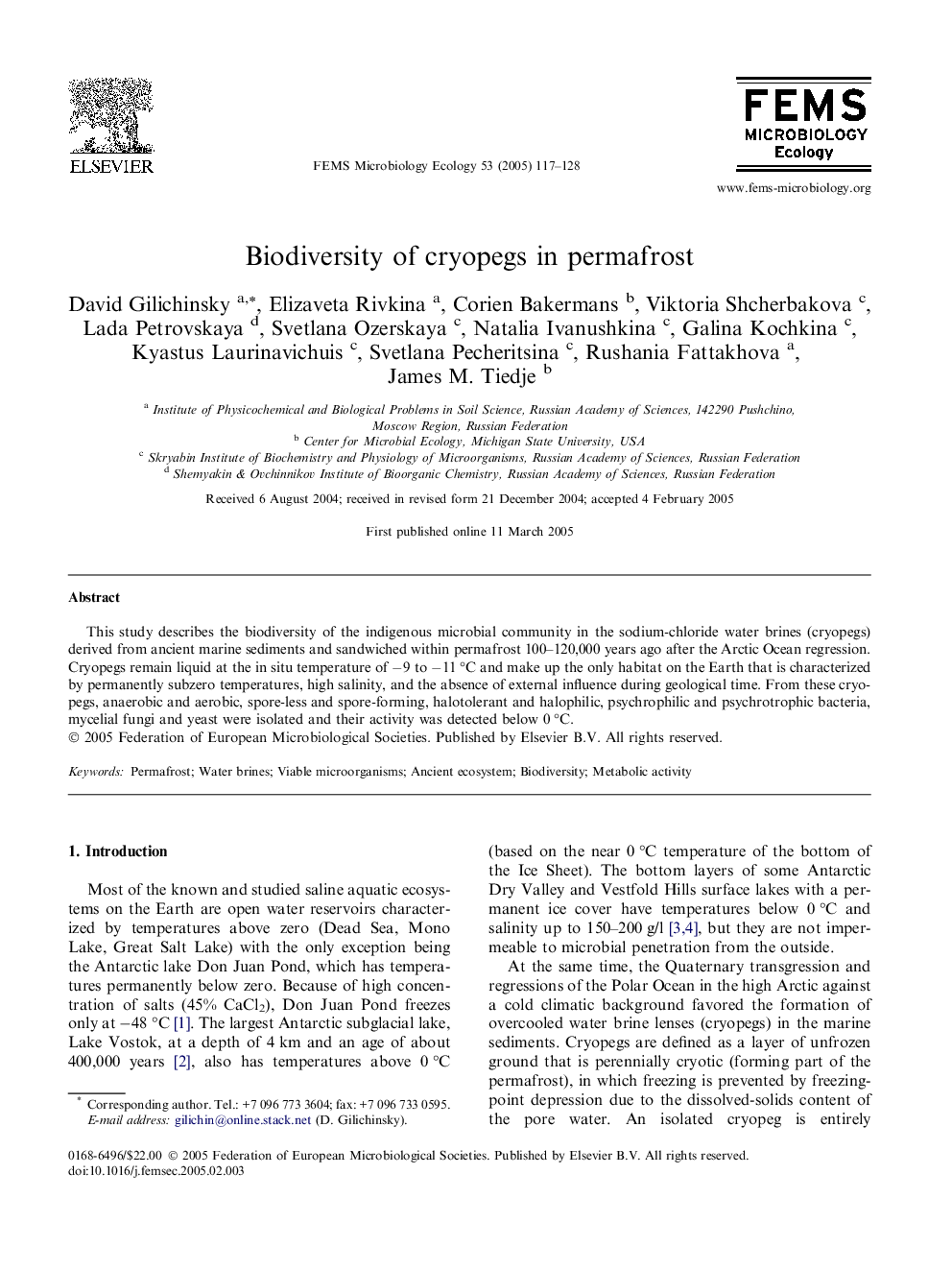| Article ID | Journal | Published Year | Pages | File Type |
|---|---|---|---|---|
| 9437715 | FEMS Microbiology Ecology | 2005 | 12 Pages |
Abstract
This study describes the biodiversity of the indigenous microbial community in the sodium-chloride water brines (cryopegs) derived from ancient marine sediments and sandwiched within permafrost 100-120,000 years ago after the Arctic Ocean regression. Cryopegs remain liquid at the in situ temperature of â9 to â11 °C and make up the only habitat on the Earth that is characterized by permanently subzero temperatures, high salinity, and the absence of external influence during geological time. From these cryopegs, anaerobic and aerobic, spore-less and spore-forming, halotolerant and halophilic, psychrophilic and psychrotrophic bacteria, mycelial fungi and yeast were isolated and their activity was detected below 0 °C.
Related Topics
Life Sciences
Environmental Science
Ecology
Authors
David Gilichinsky, Elizaveta Rivkina, Corien Bakermans, Viktoria Shcherbakova, Lada Petrovskaya, Svetlana Ozerskaya, Natalia Ivanushkina, Galina Kochkina, Kyastus Laurinavichuis, Svetlana Pecheritsina, Rushania Fattakhova, James M. Tiedje,
